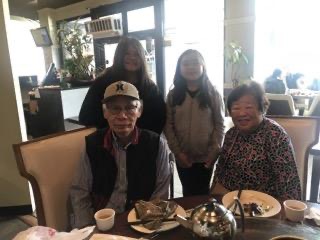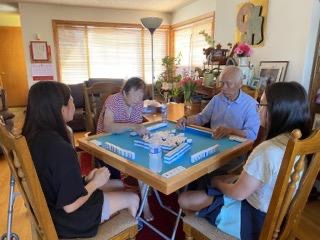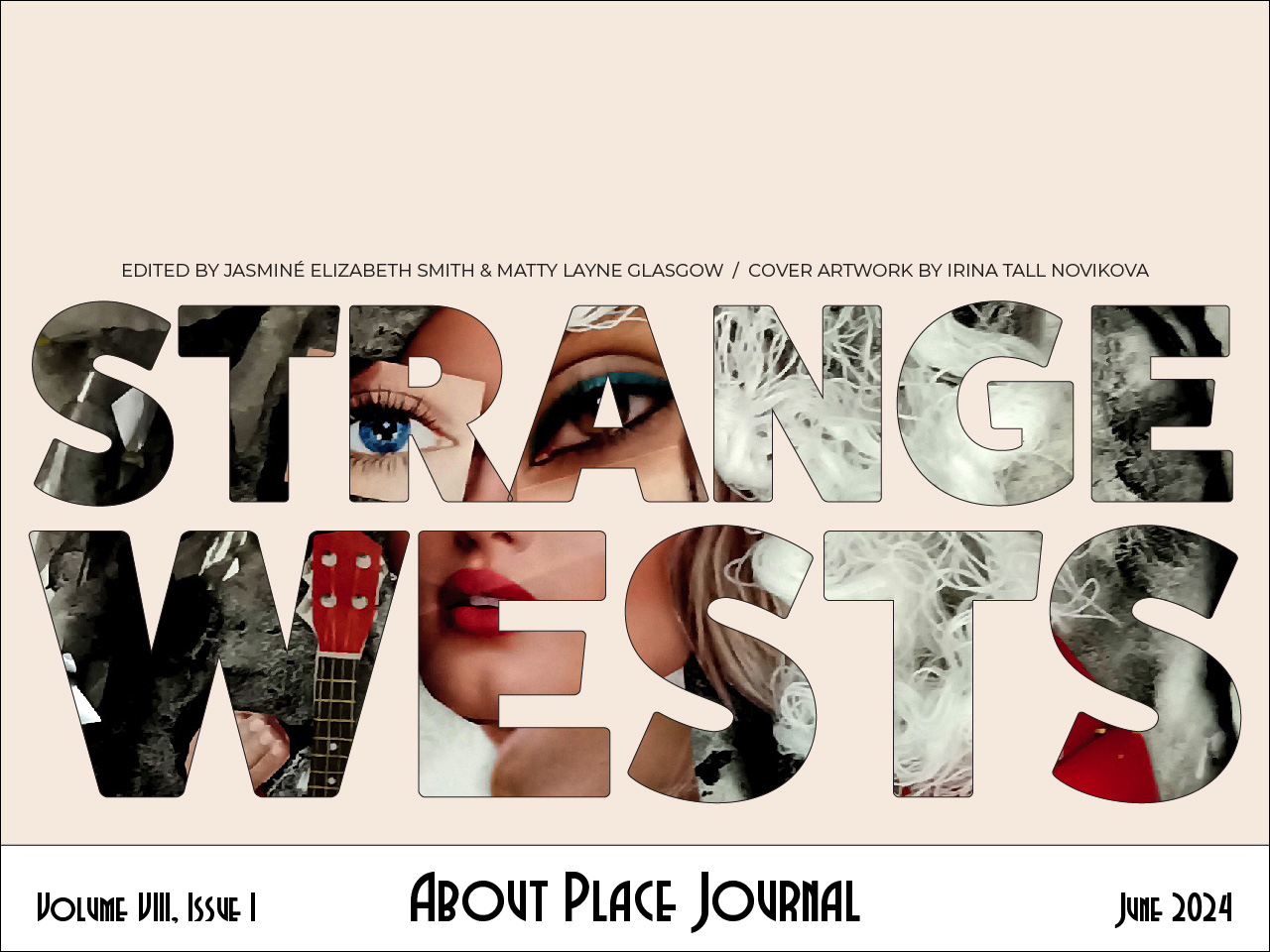
Picture a serene landscape, a verdant tapestry woven by the hands of nature, where butterflies twirl through the emerald branches of ancient trees that reach towards the heavens, each leaf a testament to the intricate dance of life. In this canvas of tranquility, the roots delve deep into the earth, intertwining with the soil that cradles the secrets of generations. Here, the essence of reciprocity is not merely a philosophical concept; it is a silent agreement witnessed in the dance of the flora and the caress of the breeze. It is within this natural sanctuary that traditional Chinese beliefs find their roots. Daoist and Confucian philosophies echo through the rustling leaves, revealing nature as the grand mentor of reciprocity. The interconnectedness of nature and human life becomes a sacred lesson, where the cyclical patterns of seasons unfold the wisdom of balance. Yet, this dance is not just observed in the swaying branches; it is a dance we learn within the familial embrace, where reciprocity becomes a legacy passed down through generations.

NOURISHMENT
Traditional Chinese beliefs are deeply intertwined with nature and the concept of reciprocity. The Chinese have long held a profound reverence for nature, viewing it as a harmonious and interconnected system. This perspective is rooted in Daoist and Confucian philosophies, where nature is seen as a model of balance and harmony. Reciprocity with nature involves living in accordance with natural rhythms, respecting the cyclical patterns of the seasons, and maintaining a balanced relationship with the environment. Similarly, the importance of family is paramount in Chinese culture. Filial piety, a Confucian virtue, emphasizes respect for elders and ancestors, forming a strong bond between generations. The family is often seen as a microcosm of the larger natural order, with each member playing a unique role in maintaining harmony. In essence, traditional Chinese beliefs emphasize a holistic worldview that integrates humans with nature and family, promoting balance, respect, and reciprocity in the interconnected web of life. Modern Confucian thinkers propose a global contribution through the “unity of Heaven and Humanity,” advocating for an anthropocosmic worldview that rejects human isolation from nature.
My journey of reciprocity begins with a walk through vibrant purple gates with a stomach yearning for what lies ahead. My eyes squint, trying to place where Popo (Grandma) and Gung Gung (Grandpa) are seated. As my eyes fall upon them, I skip to my seat. The umami air fills my lungs, the squeaking of the trolleys against the hardwood floor, and the clouds of smoke billowing from the lifted lids that reveal the goodies inside. My mom orders the food: “har gow, siu mai, fung zao” (shrimp dumplings, pork dumplings, chicken feet). The bamboo baskets arrive one at a time from countless carts that circle the whole restaurant. It feels like Christmas! We all dig in, spinning the lazy Susan until our favorite dish is within our grasp. Our plates fill up with food but just as quickly are cleaned off, as we indulge in the nutrients provided. I hear syllables of declarations each emphatically shouting their intent and echoing through the restaurant. The meanings are not yet known to me but it still feels familiar. Cutting through it all, I hear Popo say my name and my sister’s name. She hands us each a slim, shiny red envelope. Bursting with anticipation, we rip it open revealing crisp green sheets of paper that are quickly snatched away by my mother for our “future endeavors.” With our bellies full, I know this moment is one of the many shaping my relationship with my family.

GROWTH
Mahjong, deeply rooted in Chinese culture, serves as a poignant expression of human connections, uniting loved ones in a game intricately woven with symbolic reflections of the Chinese relationship with nature. The bamboo suit, symbolizing strength and flexibility, parallels the adaptability required in both the game and life. Flower tiles, representing transient beauty, align with the cyclical nature of existence in Chinese philosophy. Season tiles underscore the interconnectedness between human life and natural cycles. Wind honor and dragon honor tiles draw on powerful natural elements and mythical creatures, evoking the reverence for nature in Chinese mythology. The circle suit’s simple shapes echo the holistic view of nature in Chinese philosophy, symbolizing unity and completeness. Mahjong, with its rich symbolism, acts as a cultural bridge, connecting players to the enduring relationship between the Chinese people and the natural world. Beyond its symbolic depth, Mahjong calls for an understanding of the natural flow of the game, embodying Taoist principles of adapting to the ever-changing flow of life. The social aspect of Mahjong, bringing people together, reflects the importance of human connections in Chinese culture, akin to the interconnectedness observed in nature, providing a platform for reciprocity within relationships and the broader natural ecosystem.
I’ve outgrown my kids’ chair and can finally have a seat at the green velvet table. My mind is still growing but it is ready to be challenged. I watch as tiles and hands become one in a choreography of shuffling, chasing, and stacking until three long walls appear around me. I feel the glaring eyes as I feebly try to create my fortress one brick at a time. “Ai ya” (expression of surprise, annoyance, pain, frustration, sarcasm, etc.), I hear the infamous grunt of disappointment. Eventually, I have all my pieces in place but fear shadows upon the landscape in front of me. The war begins with the roll of 3 dice indicating everyone’s hand of tiles. Pieces are quickly moving from person to person until it is my turn, and I’m still sorting my tiles. I scramble and throw out a piece. I hear “pung” (three identical tiles), Popo grabs my discarded piece and lays it alongside its two twins. “Not off to a great start,” I think. Pieces are thrown back and forth, minds compute their strategies and probabilities at blistering speeds, and I am there too. I just want to survive without seeming a fool so I can be invited to battle another day. “Sik wu” (‘Eat Congee’: signifying your win), Popo shouts as she grabs the winning tile, but I make it out alive and begin building my next wall a little quicker and sturdier.

HONOR
As the delicate threads of life intertwine with the inexorable dance of mortality, traditional Chinese culture gracefully navigates the inevitable specter of death with a profound emphasis on family unity, filial piety, and respect for elders. Rooted in Confucianism, Taoism, and other cultural traditions, this cultural approach not only provides emotional and physical support to the dying individual but also encompasses spiritual and religious practices influenced by Taoist and Buddhist beliefs. The subsequent journey through post-death rituals, funeral customs, and ancestor worship reflects a cultural outlook that sees death as a natural part of the life cycle, guiding individuals with a mindset centered on dignified transitions, familial support, and an enduring connection between the living and the departed.
As I reluctantly stepped out of the car, a heavy anticipation clung to the air, mingling with the scent of autumn leaves. My mom’s words echoed in my mind, warning me that this might be the last time I’d see her, but their weight hadn’t fully registered. The familiar sight of the big brown recliner, usually occupied by her warm presence and glistening eyes fixated on the television, now stood empty. Following my mom into Popo’s room, I was met with the sight of a frail figure, still breathing, but drained of the vitality I had always known. The room felt like a sacred space, permeating with the gravity of the moment. Tears welled up in my eyes as I hesitated, grappling with the reality before me. My mom urged me to express my love, but words eluded me. Trembling, I approached her, my hand reaching for hers. In that fragile connection, I sensed her feeble attempt to reciprocate, a silent acknowledgment that transcended the inability to speak. It was the only movement I saw her move that day. With a heavy heart, I managed to convey my gratitude for everything she had done for me and our family. The subsequent moments blurred into a haze of tears until we found ourselves back home. It became painfully evident that this encounter marked the threshold of her imminent journey into the next stage. That poignant moment, where our hands briefly intertwined, lingered as the final memory of my beloved Popo.

RENEWAL
The belief in reincarnation among some Chinese people is influenced by religious and philosophical traditions like Buddhism and Taoism. In Buddhism, reincarnation is tied to the concept of samsara, a cycle of birth, death, and rebirth shaped by karma, with the ultimate goal of achieving enlightenment and liberation from suffering. Taoism also embraces a cyclical view of existence, emphasizing harmony with the Tao. The significance of reincarnation in relation to the natural world lies in the interconnectedness and cyclical patterns observed in both human life and nature. This belief fosters a sense of responsibility toward all living beings, promoting harmony with nature and a consideration of the broader cosmic balance. The cyclical nature of reincarnation aligns with the seasonal changes and life cycles in the natural world, inspiring respect for the interconnected web of life and guiding ethical living in harmony with the environment.
As we gathered to bid our final farewells at Popo’s funeral, a profound realization settled in—the acceptance of her departure did little to shield me from the surge of emotions. In the solemn atmosphere, her serene body lay in the coffin, a poignant sight that stirred a torrent of feelings within me. In the corners of my eyes, I felt tears begin to form, and a quick glance around revealed a shared sorrow among my family members. Tissue by tissue we listened to the speech that put everything into perspective. In the eulogy a story was told about Popo seeing a butterfly shortly after her own father passed away, remarking that it was him watching over them. Thus, the next time any of us would see a butterfly, we knew it could be her doing the same.

CONCLUSION
In the intricate dance of life, I find myself building off the profound relationship with Popo, a connection rooted in the rich tapestry of traditional Chinese beliefs. As I navigate the cyclical patterns of existence, my journey of reciprocity begins in the warmth of familial embraces and the communal joy of sharing dim sum. The vibrant scenes of Mahjong games, with their symbolic reflections of nature, serve as a bridge connecting me to the enduring relationship between the Chinese people and the natural world. Transitioning from a kid’s chair to a place at the green velvet table, I feel the weight of tradition and the responsibility to carry forward the threads of reciprocity woven by my ancestors. Even in the poignant moments of saying farewell to beloved Popo, I sense the interconnectedness between life and death, finding solace in the symbolic presence of a butterfly. As I grow, I strive to embody the teachings of reciprocity embedded in the essence of Chinese beliefs, forging enduring connections with nature, family, and the cosmic balance that guides our existence. In this journey, I become someone in touch with the intricate dance of life, perpetuating the lessons of reciprocity for generations to come.
As the bamboo baskets empty and the Mahjong tiles settle, we stand at the crossroads of tradition and transition. The echoes of nature resonate through familial bonds, Mahjong’s symbolism, and the poignant moments of life and death. In the symphony of Chinese beliefs, the interconnected web of life remains steadfast, a testament to the enduring legacy of reciprocity. Just as the cyclical patterns observed in nature guide our journey, so too does the circle of life reflect the essence of reciprocity within traditional Chinese beliefs. Saying our goodbyes, we understand that the heart of these beliefs lies not only in rituals but in the enduring connections we forge—with each other, with nature, and with the cosmic balance that shapes our existence. In the memory of a butterfly, we find solace, knowing that the intricate dance of life continues, perpetuating the lessons of reciprocity for generations to come.
Bibliography
Ruyu Hung (2019), Chinese ecological pedagogy: humanity, nature, and education in the modern world, Educational Philosophy and Theory, 51:11, 1073-1079, DOI: 10.1080/00131857.2019.1572443
Health Service Executive. “Care of the Dying – Chinese Community.” HSE.Ie, 2023 Health Service Executive, www.hse.ie/eng/services/publications/socialinclusion/interculturalguide/chinese/care-dying.html. Accessed 8 Jan. 2024.
edX. Humanity and Nature in Chinese Thought | HKUx on edX | Course About Video. YouTube, YouTube, 16 July 2015, https://www.youtube.com/watch?v=gUzT4aByHvk. Accessed 8 Jan. 2024.


